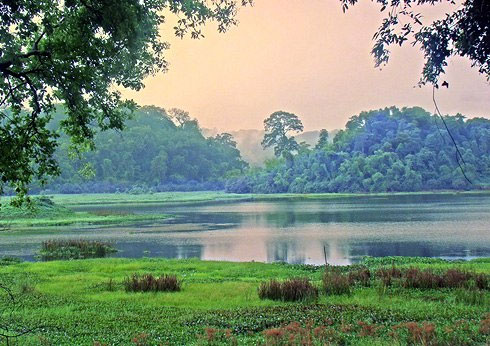In 2020, Vietnam has 41 biodiversity conservation areas
To protect and sustainably develop important natural ecosystems, species and precious genetic resources, Vietnam plans to establish 41 new protected areas by 2020.
This morning, the General Department of Environment (Ministry of Natural Resources and Environment) introduced the National Strategy on Biodiversity to 2020, with a vision to 2030. Specifically, in 2020, the area of natural reserves on land reached 9% of the territory; the area of marine protected areas reaches 0.24% of the sea area; forest coverage reaches 45%; 10 Ramsar zones, 10 biosphere reserves, 10 ASEAN heritage gardens.

Cat Tien National Park is considered as a "natural treasure" of Vietnam with many rare and precious fauna and flora species.
The General Department of Environment also announced the draft of the national biodiversity conservation master plan. Accordingly, Vietnam will establish 41 protected areas with a total area of 775,000 hectares. In 2030, Vietnam has added 23 more protected areas. Currently, Vietnam has 148 reserves.
According to Pham Anh Cuong, Director of the Department of Biodiversity Conservation, Vietnam is a country with high biodiversity in the world with many ecological and habitat types. Vietnam is part of the 238 global priority ecoregions recognized by the International Nature Conservation Fund (WWF), many of which are endemic and endangered species recorded in the book by ICUN and Vietnam.
However, according to Mr. Cuong, although the Government has made great efforts in biodiversity conservation, many policy documents have been issued, but in fact, biodiversity is on the decline and degradation. The cause is due to over-exploitation and illegal trading and illegal wildlife trade. In addition, due to the encroachment of alien species, habitats are divided due to conversion of land use purpose, infrastructure development, hydropower.
Biodiversity is the foundation of green economy, biodiversity conservation is one of the key solutions to adapt and mitigate the impacts of climate change. Biodiversity conservation associated with sustainable use of diversity contributes to poverty reduction, improving the quality of life of people.
- Vietnam and South Africa jointly protect biodiversity
- Russia and Mongolia will establish transnational conservation zones
- Most important marine areas are not preserved
- Biodiversity in Con Dao awaits conservation
- Biodiversity Conservation of Ca Mau National Park
- Biodiversity conservation, wetland of O Lau estuary
- Biodiversity: A balance between conservation and exploitation is needed
- MIDORI Award honors Vietnamese biodiversity conservationists
- More than 3 million euros of biodiversity conservation investment
- CEPF funded more than $ 2 million for biodiversity conservation in Indochina
- VN strives to conserve diversity of forest ecosystems
- 'Must act immediately to protect biodiversity
 Vietnam 5th Asian champion on fuel-efficient vehicles
Vietnam 5th Asian champion on fuel-efficient vehicles We can read all NASA studies completely free of charge
We can read all NASA studies completely free of charge Singer and songwriter Bob Dylan won the 2016 Nobel Prize for Literature
Singer and songwriter Bob Dylan won the 2016 Nobel Prize for Literature Scientific revolution in Asia
Scientific revolution in Asia